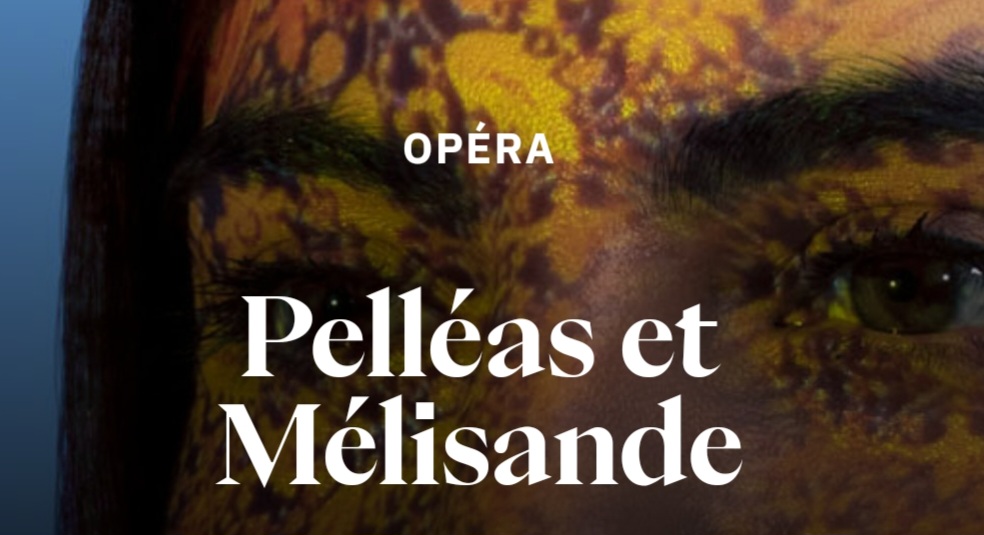Opéra Royal de Wallonie, Liège, Belgium
|
14 April 2024 |
16 April 2024 |
18 April 2024 |
20 April 2024 |
23 April 2024 |

Direction, Set and Costume Design : Barbe & Doucet
Lighting Design : Guy Simard
Conductor : Pierre Dumoussaud
Chorus : Chorus of the Opéra Royal de Wallonie, Liège
Orchestra : Orchestra of the Opéra Royal de Wallonie, Liège
Performers
Pelléas : Lionel Lhote
Mélisande : Nina Minasyan
Golaud : Simon Keenlyside / Alexandre Duhamel (18, 20 and 23.04.2024)*
Arkel : Inho Jeong
Geneviève : Marion Lebègue
Yniold : Judith Fa
A doctor : Roger Joakim
*Simon withdrew from this production. He waas replaced by Alexandre Duhamel for the final three performances on 18, 20 and 23 April.
Simon gave an interview to Olyrix.com in March 2024, in which he discusses his view of the role of Golaud.
Interview - Golaud, by Simon Keenlyside - click here to read the original French text
Our thanks to Gudrun for the English translation below:
"I spent many years singing Pelléas, I love that boy and I loved singing him. However, despite this deep joy and the fact that I miss him deeply, I prefer the depth of Golaud’s character. Young men in love usually have a nice dimension, but they are portrayed rather simply.
Golaud is a complex, fascinating and many-layered character. Golaud is the product of his solitary life. Of course, the dark forests of Allemonde (in this piece) also reflect the nature of Golaud himself. He is a creature of the forest, at ease in the dark and endless nature. He finds his way and has his strategies to face existence, without light and without love.
Problems begin, of course, when the ‘spaceship’ that is Mélisande arrives in his life and completely throws him off balance.
I think the challenge is to try to show clearly the nature of what man is: that is, not to try to show everything at once.
Golaud is self-reliant and calm, and he's kind, and he's loving, and he's jealous, and he's got rage in him, and he's a murderer.
But Golaud is not all of that at once. The trick of a play is to reveal the different qualities of the character only when asked. And these colours are both physical and vocal. We must try not to be "all-in-all" all the time.
You have to try to show the rage and the emotional breakdown. . . without allowing him to raise his voice. It's a problem for any role where the character has a mad scene. The aggressiveness of Don Giovanni, the madness of Macbeth, or even the despair of Rigoletto. . . it's always the same problem: the need to protect the voice while radically destabilizing the audience. It's a great challenge, indispensable if we want to get to the end of the opera in a healthy and strong way.
So the passage that occupies me endlessly is the scene after the murder of Pelléas.
Golaud is in Mélisande's room, with Arkel and the doctor. She wakes up and he tries to start a conversation with her, but he doesn' know what to say.
Golaud must show that he is broken, that he is full of remorse, that he is burning with questions to ask her. This single sentence: "Mélisande, have you pity on me as I have pity on you" contains so much more information than the text says. It is a wonderful challenge of colour, body position, and voice for the singer.
Then, slowly, the tension rises, because Golaud does not get the answers he wants. He is so absorbed in his pain, in this cutting pain of “not knowing” which is eating at him, that these questions become a kind of madness. But everything must remain in uncertainty: simple, broken, moaning.
I've never sung at the Liège Opera before. Of course, I’m well aware of its reputation and I can’t wait to be part of this adventure with one of the greatest musical theatre plays ever written.The ultimate challenge for any singer is to sing the role in the language of the audience, it is a special privilege and joy (to know that they are with you and with the libretto, all the time). No subtitles and no delayed reactions.
It's one of my greatest joys."
SOUNDBITES
"Mit dem charismatischen Simon Keenlyside als Golaud und dem stets exzellenten Haus-Bariton Lionel Lhote in der männlichen Titelpartie werden wiederum vokale Höchstleistungen geboten."
"With the charismatic Simon Keenlyside as Golaud and the always excellent house baritone Lionel Lhote in the male title role, top vocal performances are once again shown."
"Aux côtés de Lionel Lhote, nous retrouvons un autre baryton, Simon Keenlyside, grand baryton britannique qui a également chanté Pelléas au début de sa carrière. Le Don Giovanni de Peter Brook et Claudio Abbado, pour sa première production à Liège, campe un très beau Golaud, avec une qualité de diction française assez impressionnante."
"Alongside Lionel Lhote, we find another baritone, Simon Keenlyside, a great British baritone who also sang Pelléas early in his career. The Don Giovanni of Peter Brook and Claudio Abbado, in his first production in Liège, portrays a very fine Golaud, with impressive French diction."
"L’Opéra royal de Wallonie a fort bien fait d’offrir Pelléas à Lionel Lhote, car le baryton belge possède l’exacte voix du rôle et l’interprète avec une aisance souveraine. Dans cette nouvelle production liégeoise du chef-d’œuvre scénique de Debussy, on ne voit guère que Simon Keenlyside qui se situe sur les mêmes sommets, français excellent et déclamation toujours expressive..."
"The Royal Opera of Wallonia did very well to offer Pelléas to Lionel Lhote, because the Belgian baritone has the exact voice for the role and interprets it with sovereign ease. In this new Liège production of Debussy's stage masterpiece, we hardly see anyone other than Simon Keenlyside who is at the same level, with his excellent French and always expressive declamation..."